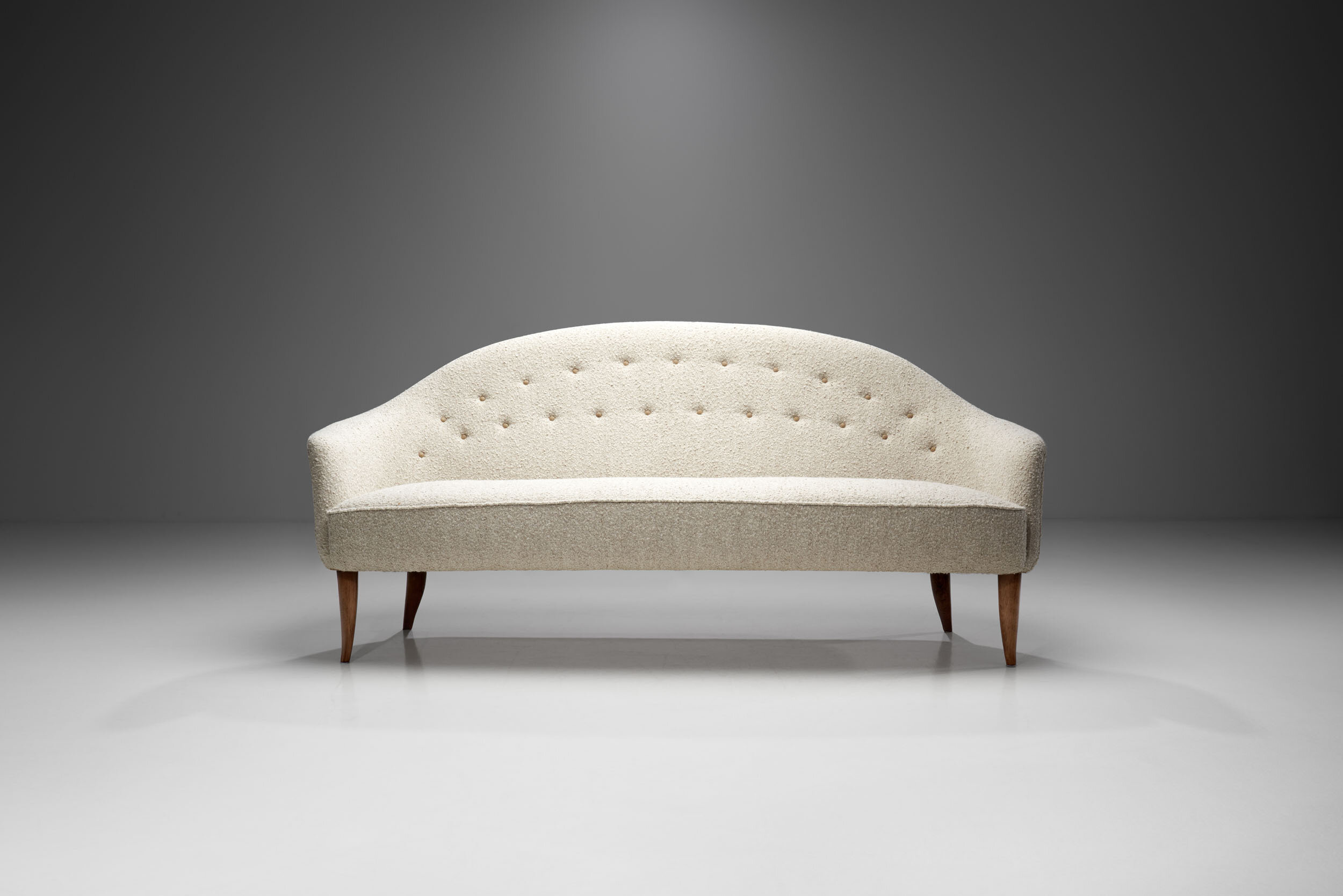Edward Wormley "New York" Sofa Version 5316 for DUX, Sweden 1950s
















Edward Wormley "New York" Sofa Version 5316 for DUX, Sweden 1950s
REQUEST PRICE HERE
Price category: 12,500 - 15,000 usd / eur
Edward Wormley took the best elements from classical, historical Scandinavian and other European furniture design and translated them into a Modern vernacular. The result was furniture like this exceptional “New York” sofa: sophisticated, stylish, understated and exceptionally well-made.
Officially known as model “5316”, this sofa was originally designed for the American furniture company, Dunbar in the 1950s. This sofa version of 5316, was made on licence in Sweden by Ljungs Industrier/ DUX. Wormley's USA-based company, Dunbar, collaborated with the Swedish furniture manufacturer DUX, who presented a series of what they called "Bra Bohag", where this version was marketed as "New York" in the most expensive price category. The design stands as a timeless example of the enduring appeal of modernist aesthetics in the world of furniture design. This iconic model epitomizes the clean lines, functionality, and understated elegance that define the modernist movement. The solid teak frame holds the upholstered body effortlessly with an airy arrangement that lets the individual parts all stand out. This is mostly the result of the straight lines with rounded edges, a harmonious blend of form and function. While the design is shorn of decorative elements, the screws, the upholstery and the tufted buttons all serve as ornamentations as well. It is specifically this ability that Wormley's genius lies in: to seamlessly marry the practical with the aesthetically pleasing. The frame's precise angles and proportions give the sofa a sense of balance and proportion that is both pleasing to the eye and comfortable to the body.
The sofa's clean, straight lines and unadorned surfaces exemplify the modernist principle of minimalism, stripping away unnecessary ornamentation in favour of pure, functional design. This “New York” sofa is truly a masterpiece of modernist design, a real statement piece.
Condition:
In good vintage condition. Wear consistent with age and use. The sofa has been reupholstered recently in a premium linen fabric. Each of our items can be re-upholstered by our in-house atelier in a fabric of choice. Please reach out for more information.
Dimensions:
90.15 in W x 31.49 in D x 30.51 in H; Seat height 18.05 in; Arm height 25.19 in
229 cm W x 80 cm D x 77.5 cm H; Seat height 47 cm; Arm height 64 cm
Literature:
Henschen & Blomberg (ed), "Svenskt Möbellexikon", Förlagshuset Nordens Malmö 1961, II, p 747.
Berglund & Engdahl, "Möbelråd", Uppsala, 1961, p 71 (wrongly attributed to Alf Svensson)
About the designer:
Edward J Wormley (December 31, 1907 – November 3, 1995) was an American designer of modern furniture. In 1926, he briefly studied at the Art Institute of Chicago. Due to financial restrictions, he began work as an interior designer for Marshall Fields & Company department store. During the Depression, Wormley was introduced to the president of Dunbar Furniture Company of Berne, Indiana, who hired him to upgrade their product line.
Dunbar made a good choice, as he met immediate success with Wormley's work. In 1944 the company decided to focus strictly on Modern lines, and Edward Wormley rose to the task, incorporating European and Scandinavian innovations.
His eye for quality and the exacting craftsmanship at Dunbar made for furniture that was elegant, understated and exceptionally well-made. Wormley was never really at the forefront of Modern design. Instead, he took the best elements from classical, historical design and translated them into Modern vernacular. The result was furniture that was sophisticated, yet mainstream and very successful.
Wormley's inclusion in the Good Design Exhibitions staged by the Museum of Modern Art and the Merchandise Mart between 1950 and 1955 elevated him to a respected place alongside more cutting edge designers like Bertoia, Nelson and Eames. In 1938 MoMA launched an exhibit they called Useful Objects, in which they showcased “design intended for present-day life, in regard to usefulness, to production methods and materials and to the progressive taste of the day.”
In the wake of America’s postwar prosperity, the exhibit was later renamed Good Design and largely focused on modern furnishings. The exhibit reopened in 1950 under the name Good Design with three of Edward Wormley’s works on display: an adjustable upholstered wood armchair, a “Short John” coffee table with laminated wood legs, and a “Repartee” gray carpet.
Wormley’s inclusion in the exhibit proved that traditional forms still had a place in the modern design movement. During the exhibit’s run thirty Wormley pieces were awarded Good Design designation, cementing him as a peer among other high-profile designers of the era. Wormley understood the essential elements of Modernism but never limited himself to one ideology. His furniture represented a convergence of historical design and 20th century innovation that greatly appeals to today's collectors.












